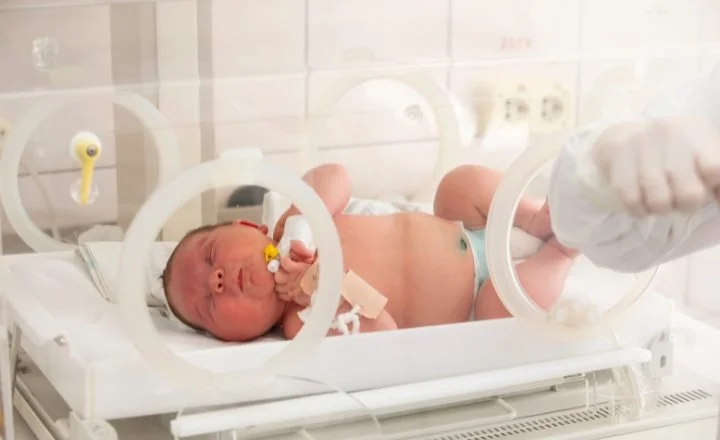NICU Denials: 7 Documentation Errors Neonatology Practices Must Eliminate
Neonatal intensive care units (NICUs) play a vital role in delivering lifesaving care to premature and critically ill newborns. Yet, despite the undeniable clinical necessity of many interventions, neonatology practices are frequently challenged by claim denials from payers. These denials often don’t stem from the care provided, but rather from documentation errors that prevent medical necessity from being clearly demonstrated.
For neonatology groups, the stakes are high: denied NICU claims not only delay or reduce revenue but also increase administrative burden, affect compliance, and can strain relationships with both hospitals and families. The good news? Most NICU denials are avoidable with meticulous documentation practices.
In this article, we’ll break down seven of the most common documentation errors that lead to NICU denials—and provide actionable strategies neonatology practices can use to eliminate them.
Table of Contents
1. Admission Notes That Fail to Prove Medical Necessity
The admission note sets the foundation for the NICU stay. If it doesn’t capture gestational age, birth weight, perinatal complications, Apgar scores, and the clear reason for NICU admission, payers may argue a lower level of care was sufficient.
How to Fix It — NICU medical necessity documentation
Include objective data such as oxygen saturation, blood gases, and resuscitation details.
Document maternal risk factors like diabetes, chorioamnionitis, or preeclampsia.
Clearly state why NICU-level care—not newborn nursery—was required.
2. “No Change” Progress Notes That Trigger Denials
NICU stays often span weeks, and payers expect daily proof of ongoing medical necessity. Repetitive or vague progress notes—such as “no change”—invite scrutiny.
How to Fix It — ongoing medical necessity documentation
Update progress notes daily with specific changes or risks being managed.
If stable, explain why the infant still requires NICU monitoring (e.g., apnea, feeding immaturity).
Show that medical decision-making is ongoing, not stagnant.
3. Incomplete Details on Respiratory Support
Respiratory interventions are one of the top justifications for NICU admission—but denials happen when documentation lacks detail. Simply stating “on CPAP” isn’t enough.
How to Fix It — NICU coding best practices
Record the type of support (CPAP, high-flow, mechanical ventilation).
Include ventilator settings, FiO₂ levels, and duration of support.
Document clinical response and any attempts to wean or escalate support.
4. Gaps in Growth and Feeding Documentation
Nutrition and growth are central to NICU care, yet feeding challenges are often under-documented, leading payers to believe a baby can be downgraded.
How to Fix It — neonatal nutrition documentation
Record daily weights and growth percentiles.
Specify feeding method (oral, NG, TPN) and any complications (reflux, aspiration).
Document why specialized feeding or nutritional support remains necessary.
5. Skimpy or Missing Procedure Notes
From central line placements to lumbar punctures, procedures need detailed documentation to justify coding and billing. Missing outcomes, consents, or timing data are common denial triggers.
How to Fix It — NICU medical billing errors
Always include indication, technique, and outcome.
Note complications and follow-up care provided.
For time-based procedures, include accurate start and stop times.
6. Downplaying Severity of Illness and Risk
Even when stable, NICU infants remain at high risk for deterioration. If documentation only reflects stability without emphasizing risks and complexity, insurers may downgrade the level of care.
How to Fix It — hospital denial prevention strategies
Capture clinical instability such as apnea or desaturations.
Highlight risk factors like immaturity of feeding or respiratory drive.
Record consultations with subspecialists that underscore complexity.
7. Copy-Paste Notes That Undermine Credibility
Cloned documentation is a red flag. Identical notes day after day suggest care isn’t changing—or worse, that documentation is unreliable.
How to Fix It — medical record documentation in neonatology
Avoid copy-paste shortcuts for progress notes.
Add individualized clinical updates, even if minor.
Reflect evolving care plans, parental involvement, and risk status.
Beyond Documentation: Proactive Strategies to Prevent NICU Denials
Fixing documentation errors is essential, but practices should also strengthen their overall compliance strategy:
Use Smart Templates that prompt for mandatory data points.
Audit Regularly to spot gaps before payers do.
Educate Providers on evolving payer requirements, aligned with AAP Neonatal Care Guidelines.
Collaborate with Coders to align clinical and billing accuracy.
Track Denial Trends and use appeal language to strengthen documentation in line with CMS Medical Necessity Documentation Standards.
Final Thoughts
NICU denials are a growing challenge for neonatology practices—but they’re not inevitable. Most are preventable with clear, consistent, and detailed documentation.
By eliminating these seven documentation pitfalls, neonatologists can reduce denials, safeguard revenue, and most importantly, ensure the medical complexity of NICU patients is fully recognized. For more insights, see our in-depth guide on Neonatal Billing & Coding Services and our NICU Coding & Billing Guide for Newborn Care.
Strong documentation doesn’t just secure payment—it protects the care journey of the most vulnerable patients.
FAQs About NICU Denials and Documentation
Request for Information
👉 Need expert neonatal billing support? Fill out the form below to request our specialized NICU billing services and reduce denials today.

